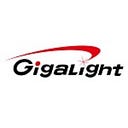Battle of the Data Center Giants: InfiniBand vs. Ethernet — Exploring the Key Differences
As data centers become the backbone of our digital world, the choice of networking technology becomes more crucial than ever. In the realm of data transmission, two heavyweights, InfiniBand and Ethernet, vie for supremacy. Let’s embark on a journey to unravel the distinctions between these titans, from design goals to reliability and cost-effectiveness, and understand the critical factors influencing the data center landscape.
Design Objectives
InfiniBand, originally coined as “Infinite Bandwidth,” was purpose-built to connect servers, storage, and network devices, catering to the specific requirements of data centers. It leverages high-speed differential signaling and multi-channel parallel transmission mechanisms, with its primary objectives encompassing high performance, low latency, and unwavering reliability.
Conversely, Ethernet serves as a universal protocol, extensively utilized in local area networks (LANs) and wide area networks (WANs) for communication. It employs the Carrier Sense Multiple Access with Collision Detection (CSMA/CD) mechanism to avert collisions, with its core goals centered on simplicity, flexibility, and scalability.
Transmission Speeds and Latency
InfiniBand supports an array of transmission modes, including SDR (Single Data Rate), DDR (Double Data Rate), QDR (Quad Data Rate), FDR (Fourteen Data Rate), EDR (Enhanced Data Rate), HDR (Hundred Gigabit Data Rate), and NDR (Next Data Rate). Each mode exhibits unique characteristics and advantages tailored for diverse application scenarios.
Ethernet equally boasts support for a range of transmission rates, such as 10Mbps, 100Mbps, 1Gbps, 10Gbps, 25Gbps, 100Gbps, 200Gbps, 400Gbps, and beyond. Nevertheless, Ethernet’s latency is primarily contingent upon the performance of network devices and network traffic.
Due to InfiniBand’s utilization of higher transmission rates and specialized hardware, it claims a distinct advantage in terms of latency. Conversely, Ethernet tends to exhibit higher latency levels, largely attributable to the intricacies of its protocol stack and additional processing stages.
Reliability and Scalability
InfiniBand is characterized by high reliability and low power consumption, aligning seamlessly with the performance and reliability requisites of contemporary data centers. It deploys high-speed differential signaling and multi-channel parallel transmission mechanisms, facilitating exceptionally high data transmission speeds and minimal latency. Furthermore, InfiniBand is distinguished by its attributes of high reliability and low power consumption, further tailoring itself to the modern data center’s performance and reliability demands.
Ethernet, a universal protocol, serves as the linchpin in local area network (LAN) and wide area network (WAN) communications. It relies on the Carrier Sense Multiple Access with Collision Detection (CSMA/CD) mechanism to prevent collisions, with its core objective centered on simplicity, flexibility, and scalability.
Cost and Maintenance
InfiniBand is a specialized protocol necessitating dedicated hardware and software components. Consequently, it tends to be relatively more costly. Nevertheless, its design, tailored for the data center environment, imposes fewer environmental constraints and lower maintenance costs.
In contrast, Ethernet is a general-purpose protocol compatible with standard Ethernet switches and network interface cards (NICs). As a result, Ethernet is characterized by its cost-effectiveness. However, the intricacies of its design and configuration contribute to higher maintenance expenses.
Applications
In light of their distinctive attributes, InfiniBand predominantly finds utility in the high-performance computing sector, including supercomputers, data centers, and scientific research institutions. Its strengths shine in high-speed data transmission, low latency, and scalability.
Ethernet is widely applied in enterprise networks, internet access, home networks, and various other domains. Its key strengths encompass cost-effectiveness, standardization, and widespread support.
In summary, InfiniBand and Ethernet represent two divergent data center network communication technologies, each marked by differences in design objectives, transmission rates and latency, reliability and scalability, cost and maintenance, and application areas. Real-world applications should guide the selection of the appropriate protocol based on specific demands.
As technology advances and market dynamics evolve, both of these technologies remain in a state of perpetual development and competition. To align with the ever-growing demands of data centers, InfiniBand and Ethernet continue to embrace ongoing technological innovation and enhancements. Ethernet is enhancing network performance and reliability by introducing non-blocking network designs and switch topologies, while InfiniBand is optimizing performance, reducing costs, and broadening its range of applications.
